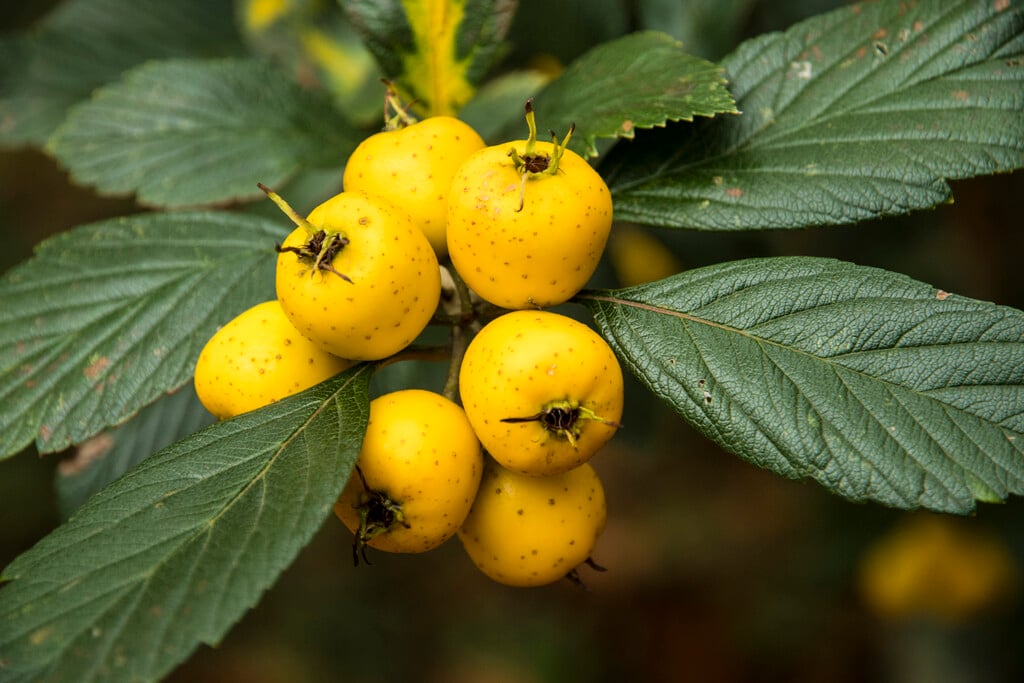Crataegus mexicana
Mexican thorn
A semi-evergreen shrub or small tree, with a spreading habit, often thorny stems and glossy dark green leaves that are toothed near the tips, and sometimes flushed bronze in winter. Clusters of white flowers are produced in late spring, followed in autumn by large golden yellow berries that persist into winter

Buy this plant
Size
Ultimate height
4–8 metresTime to ultimate height
10–20 yearsUltimate spread
4–8 metresGrowing conditions
Moisture
Moist but well–drained, Well–drainedpH
Acid, Alkaline, NeutralColour & scent
| Stem | Flower | Foliage | Fruit | |
| Spring | White | Green | ||
|---|---|---|---|---|
| Summer | Green | |||
| Autumn | Green | Yellow | ||
| Winter | Green Bronze | Yellow |
Position
- Full sun
- Partial shade
Aspect
East–facing or South–facing or West–facing
Exposure
Exposed or Sheltered Hardiness
H4Botanical details
- Family
- Rosaceae
- Native to GB / Ireland
- No
- Foliage
- Semi evergreen
- Habit
- Spreading branched
- Potentially harmful
- Seeds contain toxins so these should be removed if you are considering eating the fruit, usually grown as an ornamental shrub Pets: Fruit are ornamental - not to be eaten - see the HTA guide to potentially harmful plants for further information and useful contact numbers
- Genus
Crataegus are deciduous trees and shrubs, usually with spiny branches, lobed or toothed leaves, and clusters of creamy-white flowers followed by red or black fruits. Some have fine autumn colour
- Name status
Correct
- Plant range
- Mexico
How to grow
Cultivation
Grows well in most soils, in sun or partial shade. Can be deciduous in cold winters. Will not tolerate waterlogging
Propagation
Propagate by seed or by grafting. Seeds require stratification and may take up to 18 months to germinate
Suggested planting locations and garden types
- Coastal
- Cottage and informal garden
- Wildlife gardens
- Hedging and screens
Pruning
Pests
May be susceptible to caterpillars, aphids and hawthorn button top midge
Diseases
May be susceptible to fireblight, honey fungus, crown gall, silver leaf, powdery mildews and rust diseases
Get involved
The Royal Horticultural Society is the UK’s leading gardening charity. We aim to enrich everyone’s life through plants, and make the UK a greener and more beautiful place.